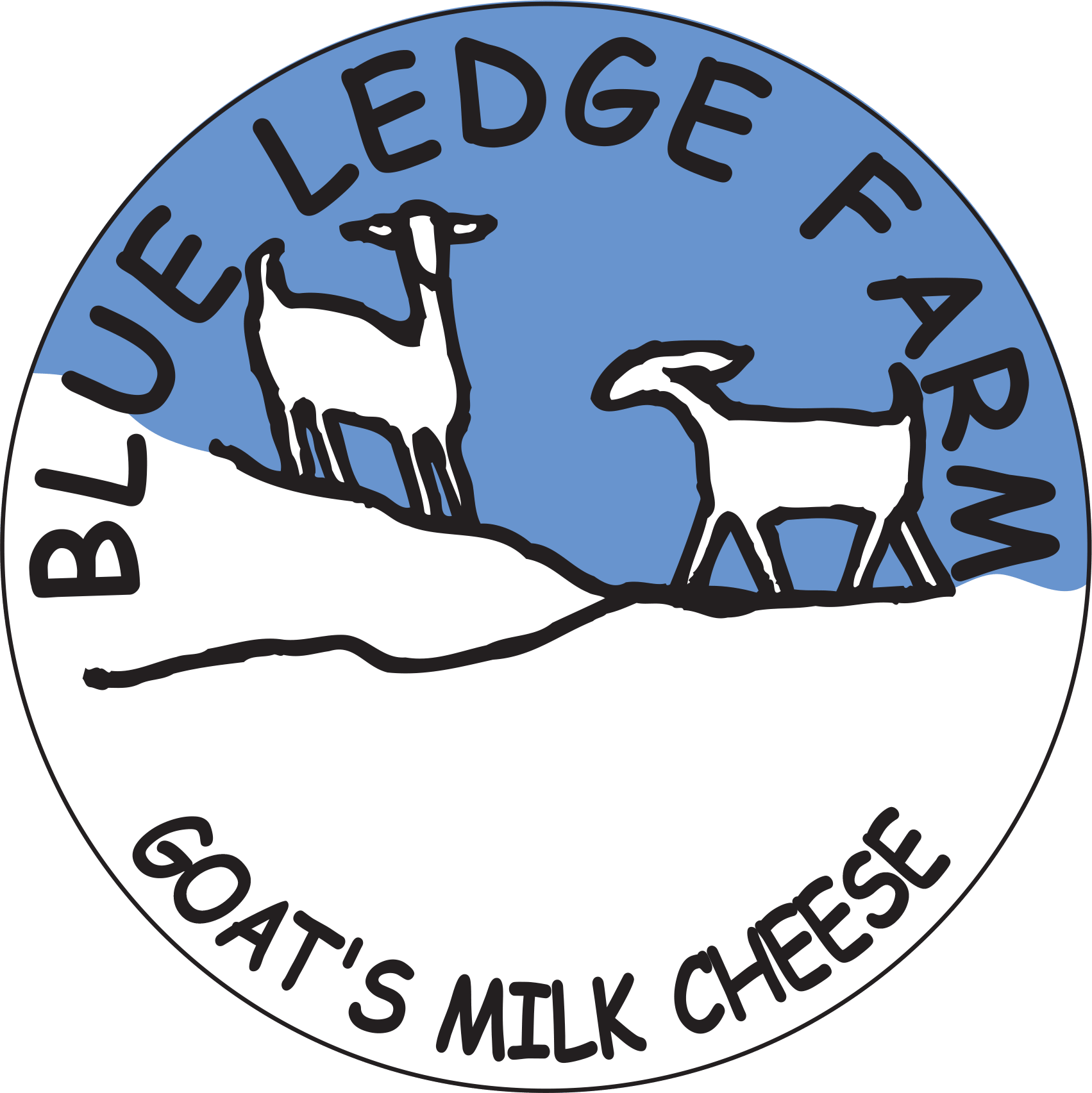Ch...Ch...Ch..Cheese Changes

Fresh chèvre was the very first cheese that we made at Blue Ledge Farm. As a new operation short on aging space and cash, fresh chèvre got the ball rolling. For the past fifteen years our fresh chèvre process has been the same: pasteurize the milk and add the culture on Tuesday. Pour the curds on Wednesday, mostly into individual moulds 2 1/2" in diameter, not once but two or three times, as the curds settle in the moulds as they drain whey. Flip the curds on Thursday. Unmould and salt the curds and bring into the cooler to dry on Friday. Every Monday has presented the same task: herbing, peppering and wrapping the hundreds of little chèvre medallions that were hand poured just five days before. Interestingly, of all of the jobs involved in getting our product from goat to store, the wrapping of the chèvre medallions has always fallen to Hannah. Something about the process has not lent itself to anyone else. So, if we average 500 medallions a week for 50 weeks a year (some weeks more, some less), that's 25,000 chèvre buttons a year Hannah has wrapped. Over 15 years that's 375,000 chèvre medallions! Time for a change before arthritis sets in! Once wrapped, we cushion these little precious gifts the best we can as they go out into the world. We hope these cheeses have arrived to people's homes in a state of perfection, where they are happily devoured, and all of the good energy that went into making it is transferred to consumer. But practically speaking. shelf-life has always been shorter than we like, and I'm sure some fell victim to dropping or squishing, or drying out in the back of the cheese drawer (I know they have here!). Last year we began brainstorming a better way to deliver our fresh chèvre. Behold! Tomorrow we unveil our new 4 oz tubs.The make process is the same, but the moulds are larger, the cheeses are combined with flavoring instead of being coated with them, and the chèvre will be in a tub and not hand-wrapped in a medallion shape. We were able to design a wrap-around label which incorporates information about us, and a UPC label which stores will like.

The benefits of these tubs: 1. Longer shelf life for our product. This is something that customers and stores are wanting. And we hope this will help our chèvre travel to destinations and reach markets that weren't possible before. After all, everyone deserves the opportunity to try our fresh, Animal Welfare Approved, farmstead chèvre! We also hope it will allow the consumer more time to relish our product in their fridge. 2. More convenient for consumers. When we "tested" this concept with friends and family their initial reaction was how this will be great it will be to have a resealable lid that keeps the cheese fresh once opened. Apparently not everyone consumes these cheeses in one sitting like us cheesemakers do. Go figure. Also folks remarked that it will be easier to take our cheese on hikes! Pragmatic and Outdoorsy-- very Vermont. 3. These tubs are locally sourced. We took a lot of time investigating which tub we like and opted for a container which is locally sourced from Rutland, Vermont. Plus these tubs are 100% recyclable while our papers are not. We took time exploring the possibility of plant-based and "eco" plastics. We spoke with several landfills to inquire: what is the most environmentally friendly packaging we could use? The answer given was a plastic which has a "friendly" number (meaning a lower number) which is readily accepted. Sadly, the plant-based and eco plastics are a #7 and therefore not accepted at many facilities. Also, the compostable containers are only truly compostable at commercial facilities; not practical for backyard composters. We want our customers to know that we take our impact on our planet very seriously, and we spent a lot of time considering the impact of a packaging change. Glass was not an option, so we went with a #5 plastic and took space on the label to remind folks in bold letters to "please recycle!". Hopefully the prompt is enough. 4. Manufacturing efficiency and ergonomics: we use a hydraulic stuffer with a foot pedal to fill each tub, so no hand wrapping or packing! And the texture of the cheese is consistent throughout. Plus, it is a task which anyone with a good eye and some coordination can do. Score. 5. Our fresh cheeses can still achieve the medallion shape on a cheese plate! We selected a tub which is tapered for this purpose. To place a medallion on a plate simply remove lid, turn tub upside down, tap the bottom and squeeze sides- viola! The cheese should retain it's medallion shape such as in this picture of "old" versus "new".
We are excited to ship these to stores this week, and we hope our customers will appreciate this change. Fifteen years is a long time to be following a process, but there is always room to innovate. A friend and fellow entrepreneur once advised us: your business should evolve like a river. Not like rapids, and not like a still lake, but slowly, thoughtfully, constantly, moving towards improvement. So here we are, steering our river!
.



